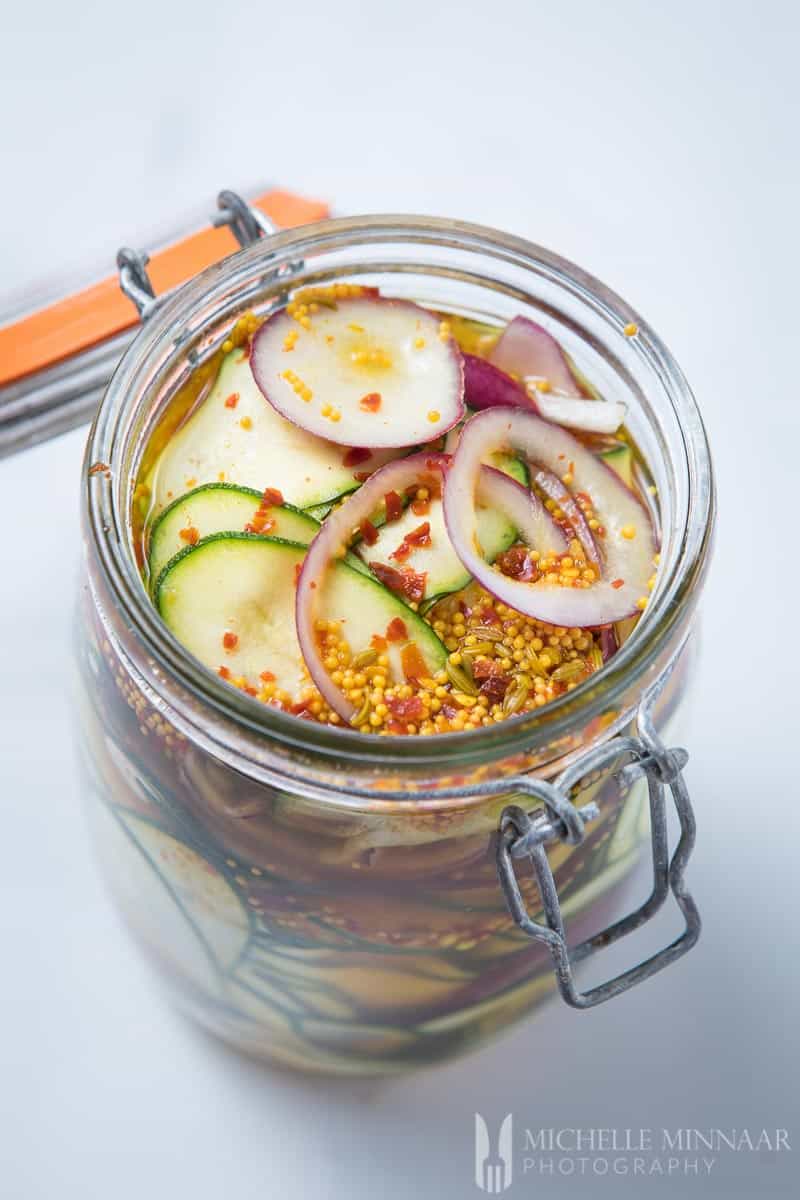For the Rugrats apple pickle indian recipe, see Dil Pickles. A request that this article title be changed to Pickle is under discussion.

Please do not move this article until the discussion is closed. This section does not cite any sources. Brined pickles are prepared using the traditional process of natural fermentation in a brine which makes them grow sour. Vinegar is not needed in the brine of naturally fermented pickled cucumbers. The fermentation process is dependent on the Lactobacillus bacteria that naturally occur on the skin of a growing cucumber. These may be removed during commercial harvesting and packing processes.
Typically, small cucumbers are placed in a glass or ceramic vessel or a wooden barrel, together with a variety of spices. Since brined pickles are produced without vinegar, a film of bacteria forms on top of the brine. This does not indicate that the pickles have spoiled, and the film may simply be removed. They do not, however, keep as long as cucumbers pickled with vinegar and usually must be refrigerated. Some commercial manufacturers add vinegar as a preservative. Bread-and-butter pickles are a marinated variety of pickled cucumber in a solution of vinegar, sugar, and spices. They may simply be chilled as refrigerator pickles or canned.
Their name and their broad popularity in the United States are attributed to Omar and Cora Fanning, who were Illinois cucumber farmers that started selling sweet and sour pickles in the 1920s. Cornichons are tart French pickles made from gherkins pickled in vinegar and tarragon. They traditionally accompany pâtés and cold cuts. The term “gherkin” is also used in the name West Indian gherkin for Cucumis anguria, a closely related species. West Indian gherkins are also sometimes used as pickles. A “kosher” dill pickle is not necessarily kosher in the sense that it has been prepared in accordance with Jewish dietary law. Rather, it is a pickle made in the traditional manner of Jewish New York City pickle makers, with generous addition of garlic and dill to a natural salt brine.
In New York terminology, a “full-sour” kosher dill is one that has fully fermented, while a “half-sour”, given a shorter stay in the brine, is still crisp and bright green. Elsewhere, these pickles may sometimes be termed “old” and “new” dills. New York City since at least 1899. Traditionally, pickles were preserved in wooden barrels, but are now sold in glass jars.
The lime is then rinsed off the pickles. The crisping effect of lime is caused by its calcium content. A safer and more convenient alternative is calcium chloride, which is neutral and requires no rinsing. Kool-Aid pickles or “koolickles”, enjoyed by children in parts of the Southern United States, are created by soaking dill pickles in a mixture of Kool-Aid and pickle brine. They also contain a moderate amount of vitamin K, specifically in the form of K1.
Sweet pickled cucumbers also tend to contain significantly less sodium than sour pickles. Pickles are being researched for their ability to act as vegetables with a high probiotic content. Probiotics are typically associated with dairy products, but lactobacilli species such as L. This section needs additional citations for verification. Please help improve this article by adding citations to reliable sources. During the Victorian era, pickles were considered a luxury food, meaning that households that served pickles were wealthy enough to have servants or staff who could prepare pickles.
Middle and upper class households often served pickles in pickle castors, a glass container in an embellished silver holder. The pickles were served with coordinated silver tongs. In the United States, pickles are often served as a side dish accompanying meals. This often takes the form of a “pickle spear”, which is a pickled cucumber cut lengthwise into quarters or sixths. Soured cucumbers are commonly used in a variety of dishes—for example, pickle-stuffed meatloaf, potato salad, or chicken salad—or consumed alone as an appetizer. Pickles are sometimes served alone as festival foods, often on a stick. Dill pickles can be fried, typically deep-fried with a breading or batter surrounding the spear or slice.
This is a popular dish in the southern US, and a rising trend elsewhere in the US. In Russia and Ukraine, pickles are used in rassolnik: a traditional soup made from pickled cucumbers, pearl barley, pork or beef kidneys, and various herbs. The dish is known to have existed as far back as the 15th century when it was called kalya. In southern England, large gherkins pickled in vinegar are served as an accompaniment to fish and chips, and are sold from big jars on the counter at a fish and chip shop, along with pickled onions.
